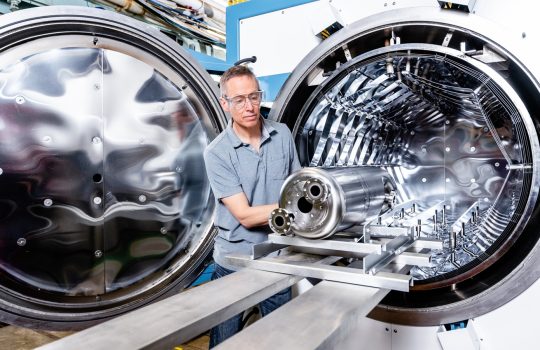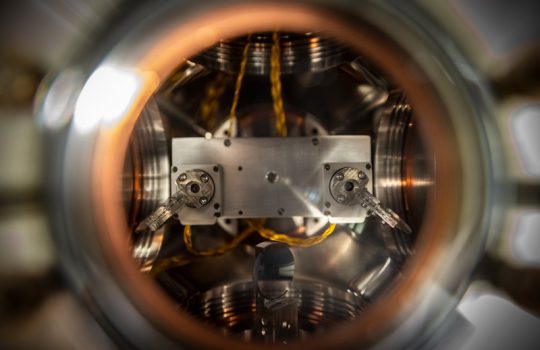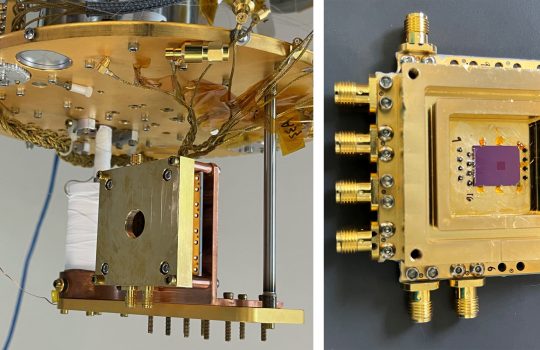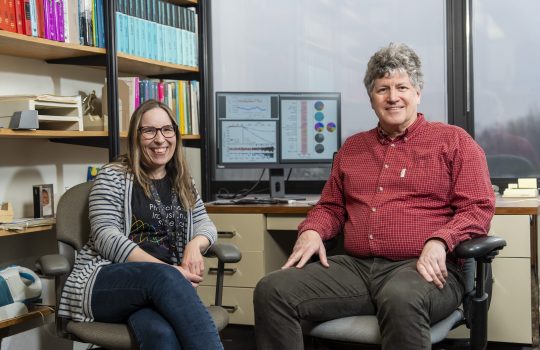Secretary of Energy Chris Wright visits Fermilab
U.S. Secretary of Energy Chris Wright visited Fermilab recently to see how the lab is driving American leadership in fundamental sciences and discovery, including in cutting-edge fields like artificial intelligence. His tour included one of the laboratory’s five particle accelerators, and the Secretary learned more about Fermilab’s flagship project, the Deep Underground Neutrino Experiment.
Fermilab mourns the passing of John Peoples, third director
John Peoples passed away on June 25, 2025. He was the third director of Fermilab, remembered as a prolific physicist and a hands-on leader.
CPS students graduate from Fermilab quantum science program
Fermilab hosted its first quantum science education outreach program for Chicago high school students. The classes were taught by quantum scientists and subject matter experts to inspire the next generation of quantum researchers.
Muon g-2 announces most precise measurement of the magnetic anomaly of the muon
The third and final result, based on the last three years of data, is in perfect agreement with the experiment’s previous results, further solidifying the experimental world average. This long-awaited value will be the world’s most precise measurement of the muon magnetic anomaly for many years to come.
Argonne and Fermilab receive $3.2M in federal funding for nuclear transmutation technology
The labs are developing a practical approach to reduce the size and cost of superconducting linear accelerators, which offer great potential for addressing used nuclear fuel, while also improving their reliability.
Fermilab opens applications for 2025 Global Physics Photowalk contest
Fermilab has started accepting applications for a local photo contest this summer as part of a global contest. Photographers will be able to capture behind the science areas at Fermilab for a chance to be entered into the international competition this fall.
Fermilab researchers advance quantum sensing for future detectors
A collaboration of scientists tested next-generation superconducting microwire single photon detectors (SMSPDs) at Fermilab to further particle physics research.
Spring at Fermilab welcomes the arrival of two baby bison
Fermilab welcomed two baby bison today, marking the start of calving season at the Department of Energy’s particle physics laboratory in Batavia, Illinois. With 23 cows and two bulls in the herd, visitors can witness these iconic animals in their natural habitat, either in person or via the Fermilab bison camera.
The LHC experiment collaborations at CERN receive Breakthrough Prize
Fermilab Distinguished Scientist Patricia McBride was invited to Santa Monica, California to accept the 2025 Breakthrough Prize in Fundamental Physics on behalf of the CMS collaboration.
Fermilab-led computing project receives large 2025 DOE INCITE award
A Fermilab-led computing project received the second-largest award and was the largest particle physics project granted supercomputer time from the DOE Office of Science INCITE program. The project will continue to further explore numerical simulations to address questions in particle physics.










